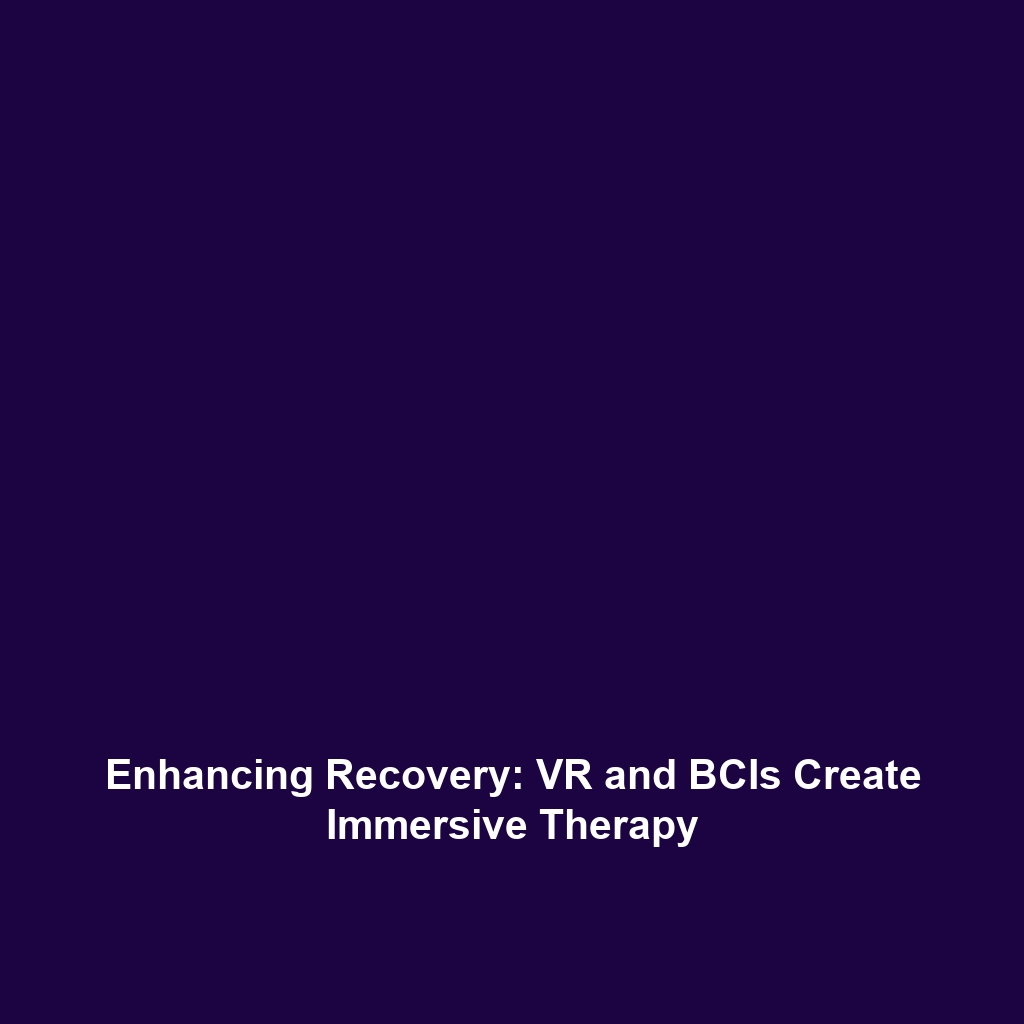Virtual Reality and Brain-Computer Interfaces: Enhancing Recovery
Introduction
Virtual reality (VR) and Brain-Computer Interfaces (BCIs) are emerging technologies that promise to revolutionize rehabilitation practices. By merging these two domains, we can create immersive environments for patients to practice motor tasks, thereby enhancing recovery. This synergy is particularly significant for individuals suffering from neurological conditions or injuries, as it allows for tailored therapy sessions that adapt to patient progress. The intersection of virtual reality and brain-computer interface technology not only motivates patients but also provides clinicians with valuable data on the recovery process.
Key Concepts
Understanding Virtual Reality
Virtual reality is a simulated experience that can mimic or create real-world environments. In the context of therapy, VR can provide engaging and interactive settings that distract users from discomfort during rehabilitation exercises.
Brain-Computer Interfaces Explained
Brain-Computer Interfaces (BCIs) allow direct communication between the brain and external devices. They are used in a variety of applications, including controlling prosthetic limbs or providing rehabilitation feedback. When combined with VR, BCIs can offer a real-time assessment of user engagement and performance.
The Integration of VR and BCIs
Integrating VR with BCIs involves using brain signals to navigate and interact with virtual environments. This novel approach can enhance motor learning by providing sensory feedback that is critical for neuroplasticity and functional recovery.
Applications and Real-World Uses
The applications of combining VR with BCIs within rehabilitation settings are numerous and impactful:
- Post-Stroke Rehabilitation: Patients can engage in motor tasks within a virtual environment that adapts to their needs and progress, encouraging repetitive practice.
- Neurological Condition Therapy: Individuals with conditions such as Parkinson’s can benefit from gamified rehab experiences that are both enjoyable and effective.
- Orthopedic Recovery: Virtual environments can simulate physical activities and sports, which motivate patients to regain motion and strength.
Current Challenges
Despite the promising potential of using VR and BCIs in rehabilitation, several challenges remain:
- The complexity of developing effective and affordable BCI systems.
- Ensuring user comfort and safety while using VR technology.
- Lack of standardized protocols for therapy effectiveness assessment.
- Accessibility for individuals with varying levels of disability.
Future Research and Innovations
Research in the fields of VR and BCIs is expected to advance significantly. Potential innovations include:
- Enhanced Brain Signal Processing: Future developments could lead to more accurate interpretations of user intent.
- AI Integration: Artificial intelligence could personalize rehabilitation experiences based on real-time feedback.
- Wireless BCI Technologies: Advancements in technology could make BCIs more user-friendly and accessible.
Conclusion
The integration of virtual reality with brain-computer interfaces presents a transformative approach to rehabilitation, providing immersive environments that encourage motor skill practice and enhance recovery. As research progresses and technologies advance, the potential for VR and BCIs to improve patient outcomes grows substantially. For those interested in exploring further, consider reading about current trends in brain-computer interface technology or the future of virtual reality in therapy.

Leave a Reply